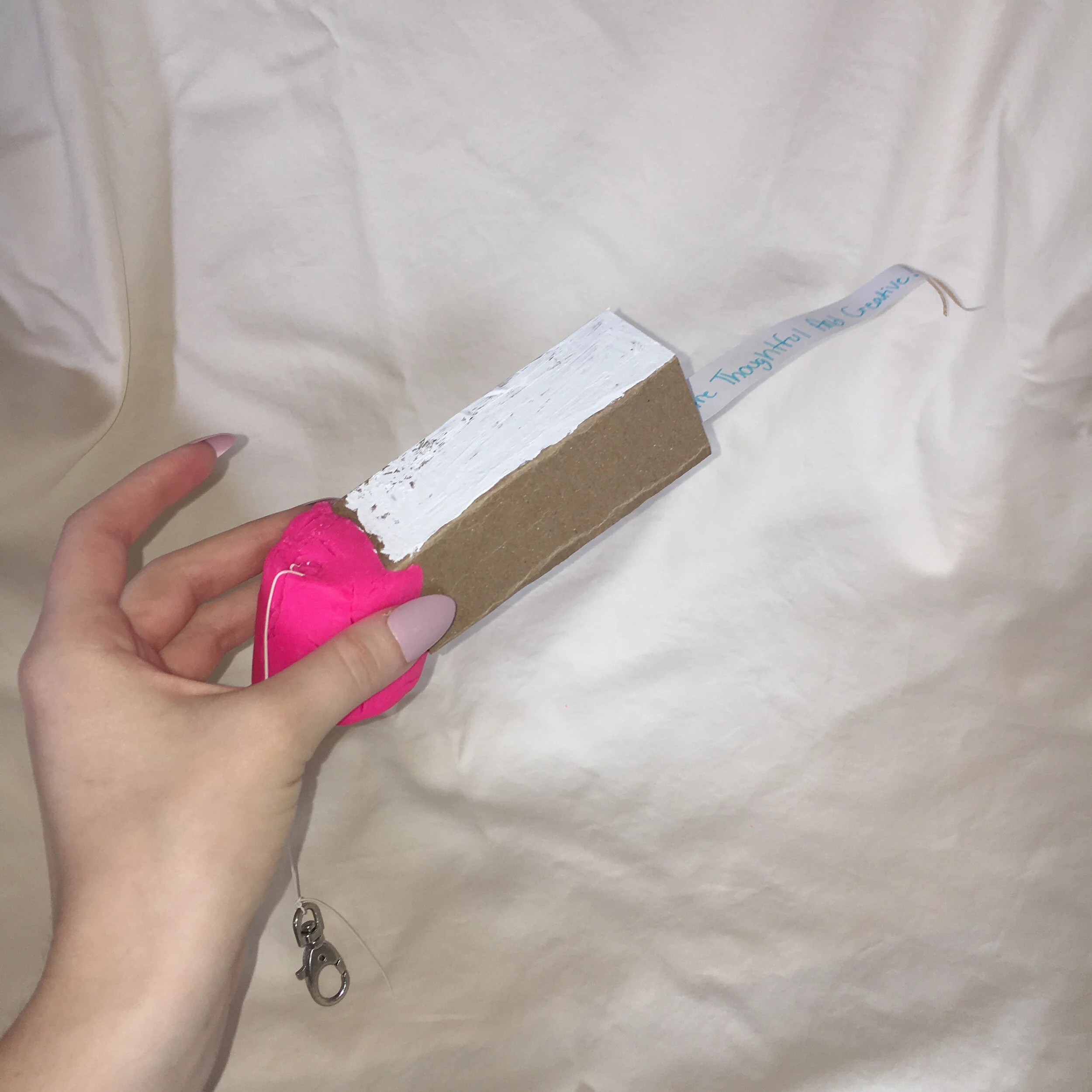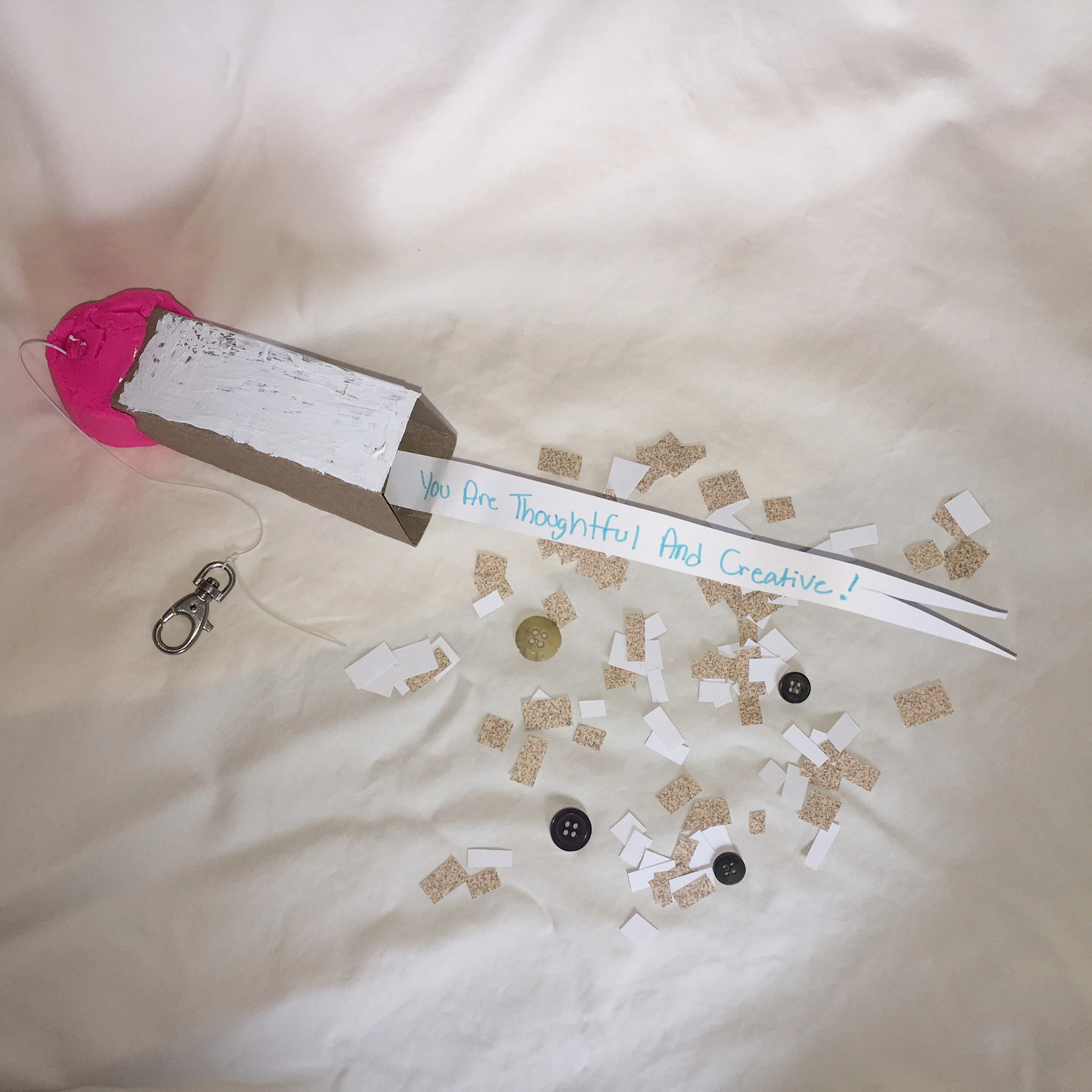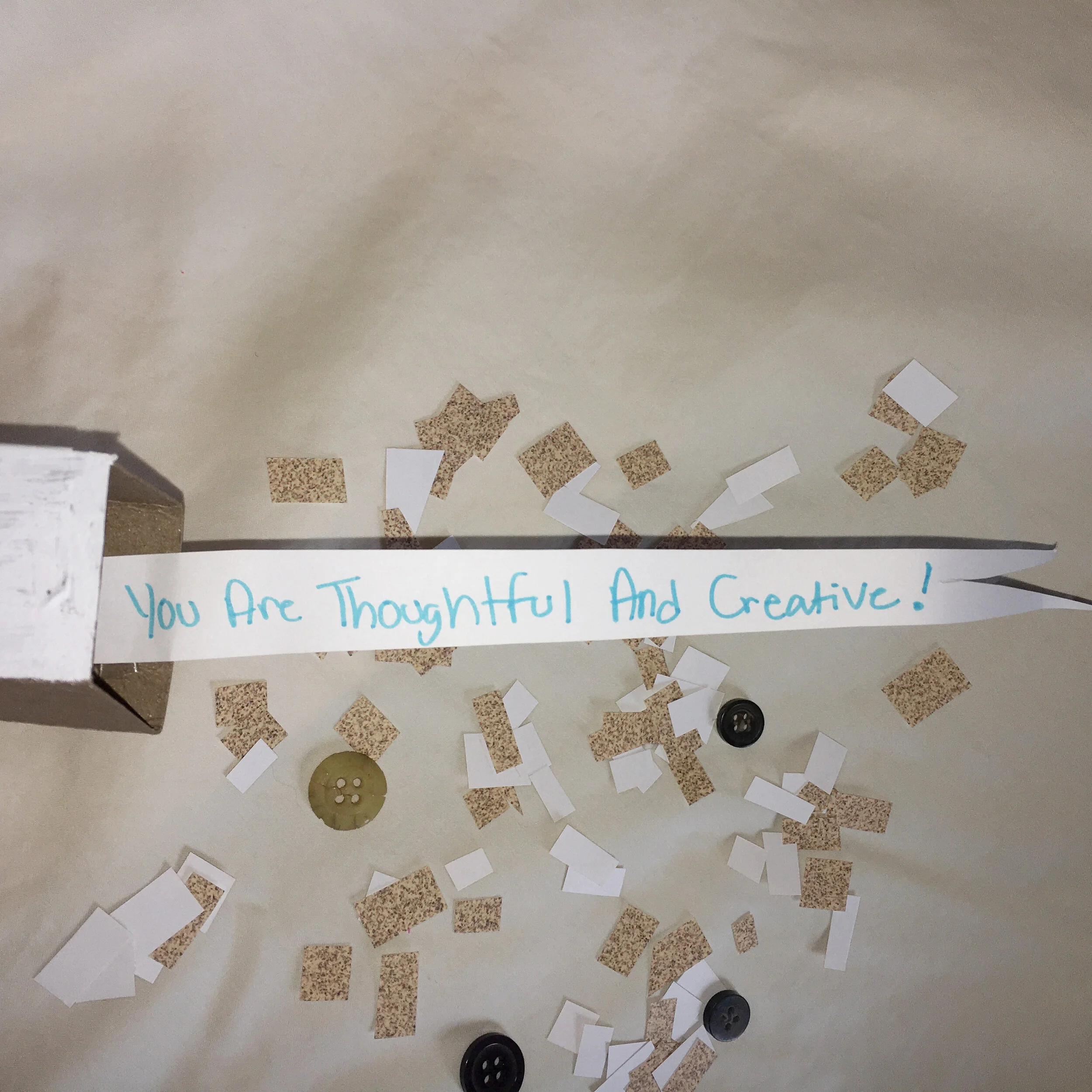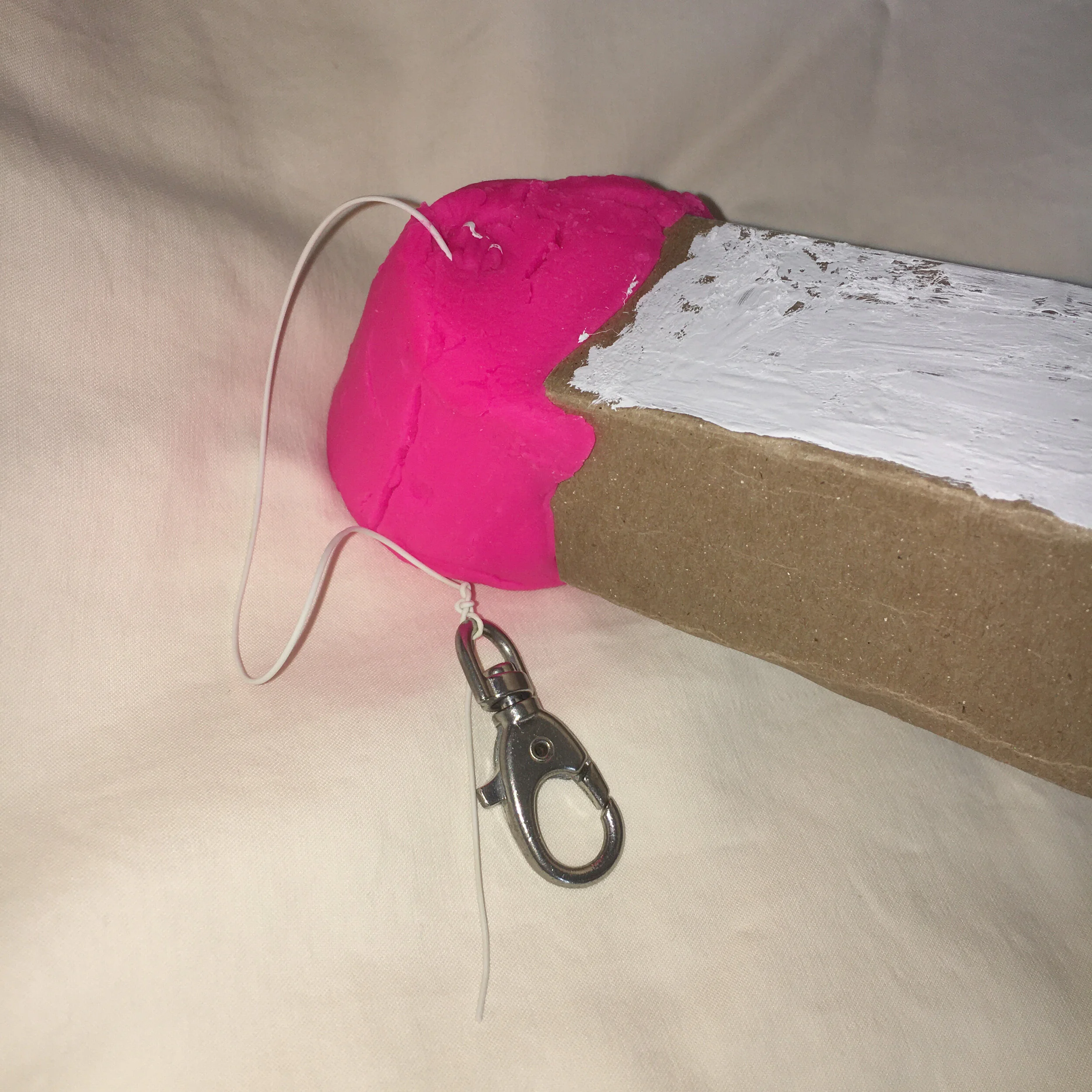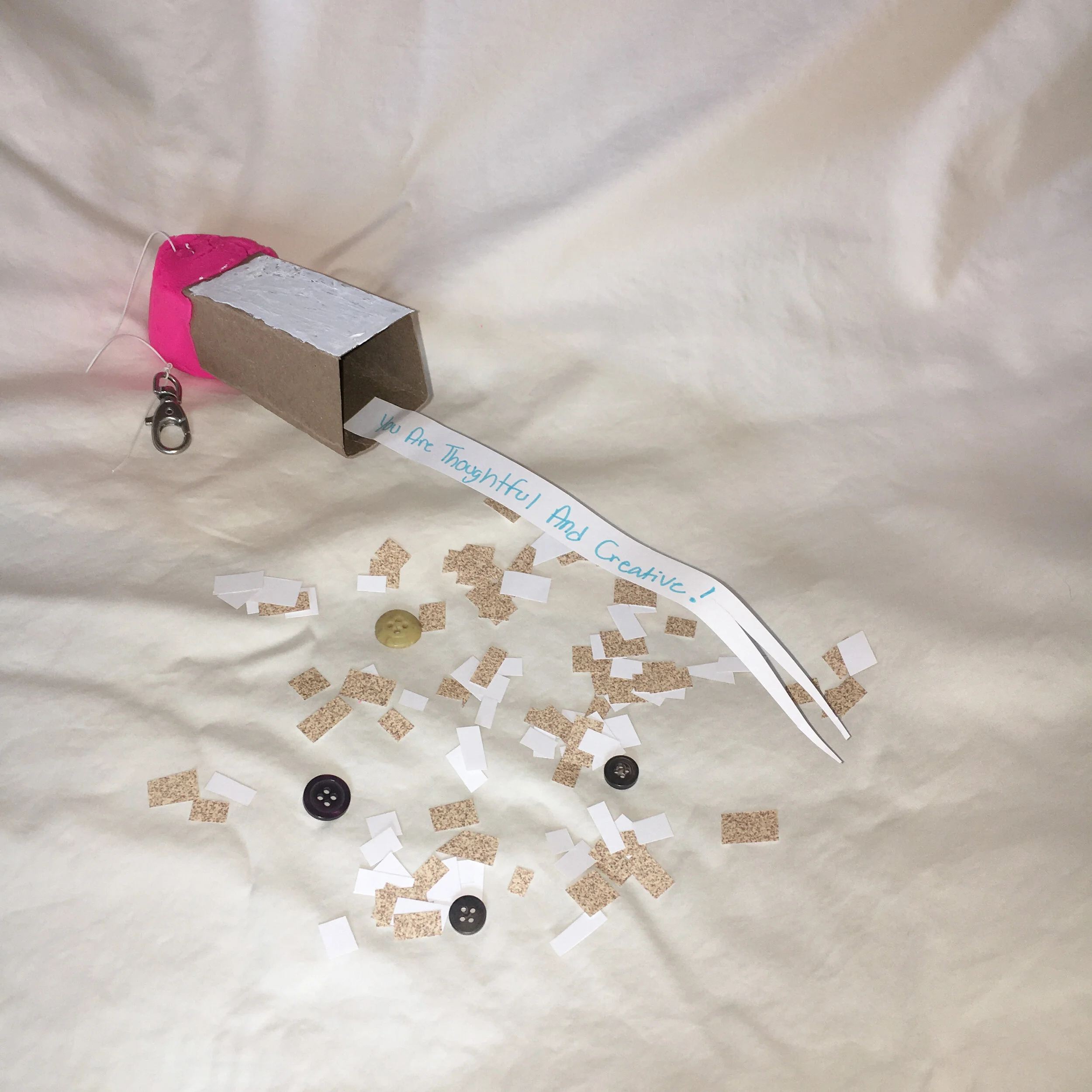Redesigning Gift-Giving: Empathy and Invention
How would you begin to reevaluate the gift-giving process? There are many ways in which the exchange of objects between people can be stressful, difficult, or just downright not fun. For a class exercise regarding this concept, I paired up with a peer and asked her questions regarding her experiences of giving people presents. I jotted down who and why she last gifted, what the process entailed, and her favorite and least favorite aspects of the exchange. Empathy is needed when delving into the problems someone faces because true understanding and care are what lead to the most useful solutions. Engaging with a real “user” like this helped to streamline the process and encouraged me to take my idea in a more engaging and fun direction. I condensed my notes from the interview into a workable problem statement: Some people try to showcase their creativity through gift-giving but often doubt themselves after the exchange has occurred.
We know that one of the most pivotal moments of the design process is inventing and allowing users to critique early iterations. This feedback is important because it comes directly from the affected community, and who would know what is needed more than them? I sketched five prototypes of gadgets and systems which could help alleviate anxiety surrounding giving work to others as a present. These included an app, a bell, a stamp, and an informational postcard. The idea that excited her the most, however, was a table-top confetti canon. This product could be used after a homemade gift was given because it would present the user with an encouraging message regarding their thoughtfulness and creativity. Confetti would also be an important component of the object, of course! I created a three-dimensional representation of the canon out of materials gathered at home. Making early iterations of a product like this always helps to edit and refine the idea because mistakes are more easily recognized in the round. For example, my subject mentioned that there would need to be an easy clean-up application after the product was set off and that a cheaper, single-use canon would be more efficient and accessible for people.
Openly showing my quickly-made, low-fidelity prototype to peers, and here on my website, was tough even in the space of a light-hearted exercise. Every designer feels the need to only put forth their best work and this funny mass of Play-Doh, cardboard, and assorted bobbles is by no means my finest moment of tangible development. However, the idea is what matters and putting that up for observation and critique is worth having it delivered in such ugly packaging, like the physical prototype (I hope you noticed and appreciated my gift-themed pun). The most important human-centered design concept I learned from this exercise was how, especially during brainstorming, you first may go too far but then you can strip down and fine-tune the idea into something more feasible as a final solution. Maybe a tiny, personal use confetti canon is not the most viable product for gift-giving situations of self-doubt. However, the idea of creating something that could help make that person smile and remind them that they are indeed a quality gifter is a strong concept worth further exploration.


